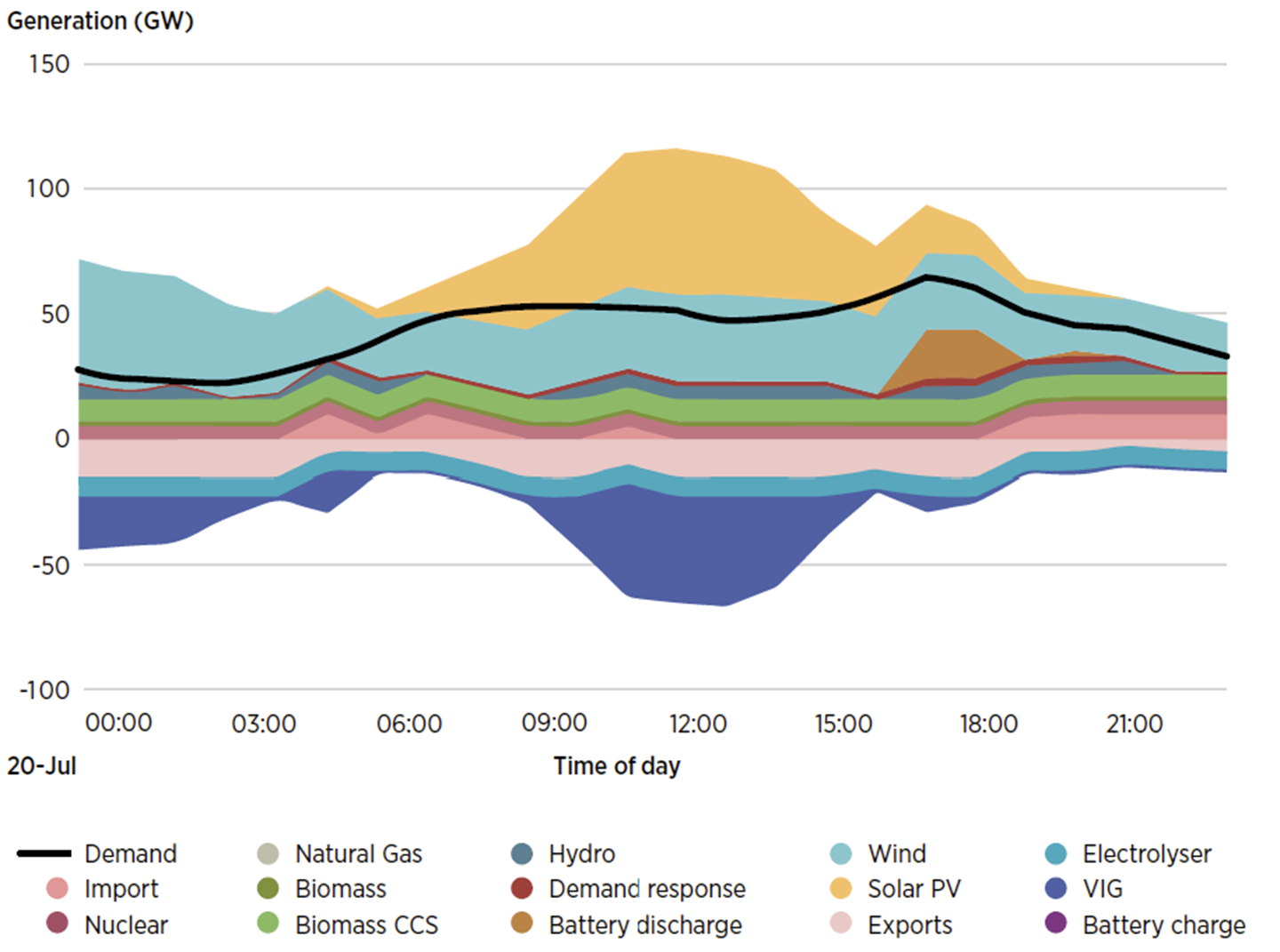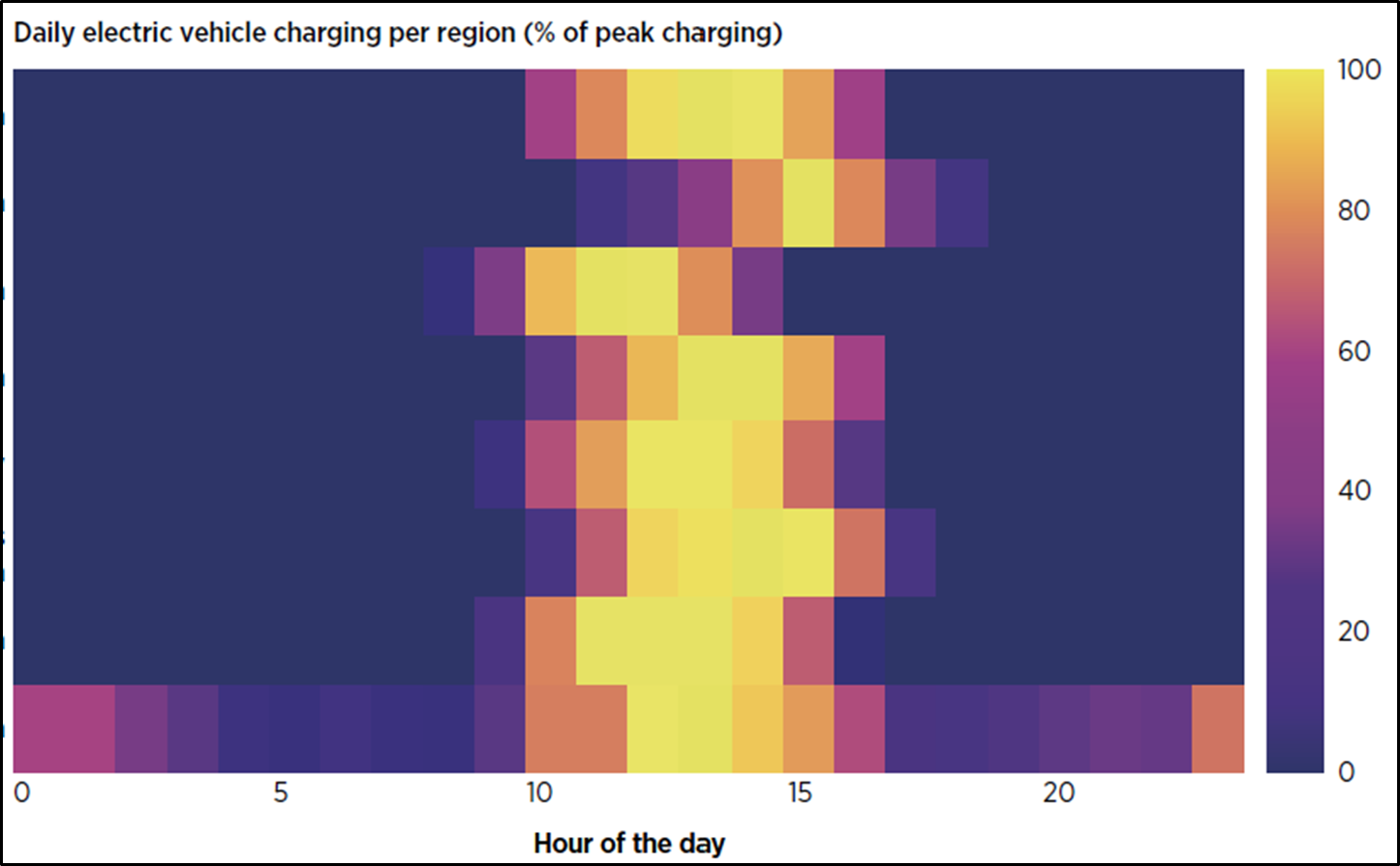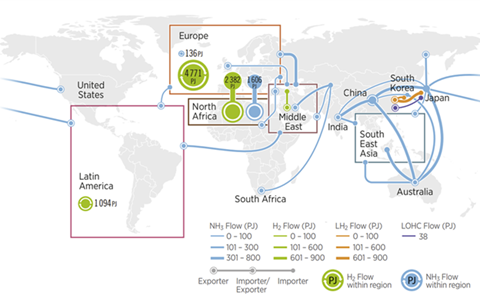Flexibility assessments
About
IRENA has developed a global power system model that charts the hourly operation of the power system in all G20 countries and all regions of the world, including production and trade of hydrogen. The model is aligned with IRENA’s World Energy Transitions Outlook and is presented in more detail in the outlook’s 2022 edition. Insights into flexibility are gathered using an optimisation model and fed into IRENA’s 1.5°C Scenario, validating and further elaborating on how a fully decarbonised power system could emerge in every region of the world by 2050.

IRENA has also developed innovative visualisations of the modelling results to highlight the potential implications for policy makers of a power system with a very high renewable share and smart electrification.

Electrolysers are one alternative to provide flexibility to the power system. At the same time, electrolysers allow coupling the power sector with the rest of the energy system. The conversion from electricity to hydrogen unlocks new possibilities to satisfy final energy demand by directly using the hydrogen (i.e. in fuel cells) or further converting it to derivatives like chemicals, steel, or synthetic fuels. This conversion also enables a more cost-effective transport over long distances and large quantities. This means low-cost renewable energy can be transported to large demand centres at a lower cost than electricity.
By 2050 hydrogen could be an essential component of the global energy system. In IRENA’s 1.5°C Scenario, by 2050 about a quarter of all the hydrogen produced could be globally traded, with about equal shares transported by pipeline and ammonia ships. Pure hydrogen is expected to be transported mainly using existing natural gas networks repurposed to carry hydrogen. They represent the cheapest option for transporting pure hydrogen where they exist.
For longer distances and places without existing natural gas infrastructure, ammonia ships become the most attractive option. In the model, 80% of the shipped ammonia is not reconverted back to hydrogen but instead used directly as chemical feedstock or as fuel in the maritime sector. Transport by ship represents a relatively small component of the ammonia supply cost, so longer distances can be covered without significantly increasing the total delivered cost. The most cost- and energy-intensive step is the reconversion back to hydrogen, which can be avoided by using the ammonia directly rather than as a hydrogen carrier.
Global hydrogen trade map in 2050 under optimistic technology assumptions

The global volume of hydrogen trade by pipeline would be relatively small compared with today’s natural gas trade; by 2050, it would be about a third more than current natural gas imports to Europe. Repurposing a fraction of today’s network would therefore be enough to supply future needs. Using existing infrastructure is essential for future trade. It is also the most promising option for avoiding stranded natural gas assets and enabling low-cost regional trade of pure hydrogen. In contrast, ammonia trade would reach almost 25 times its current level and require significant ramping up.